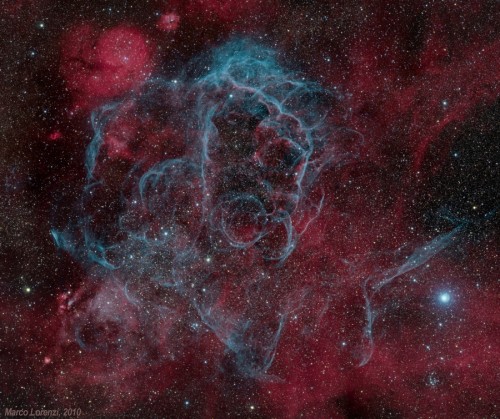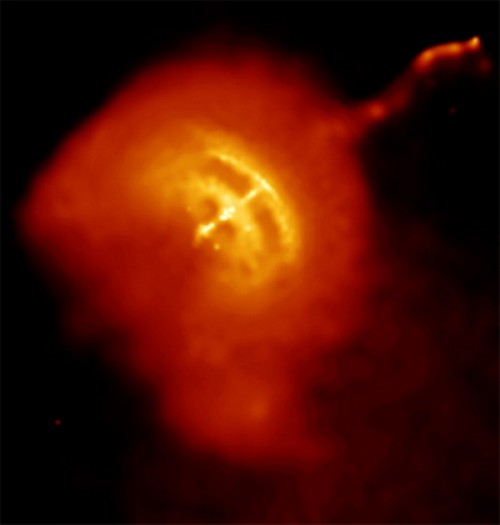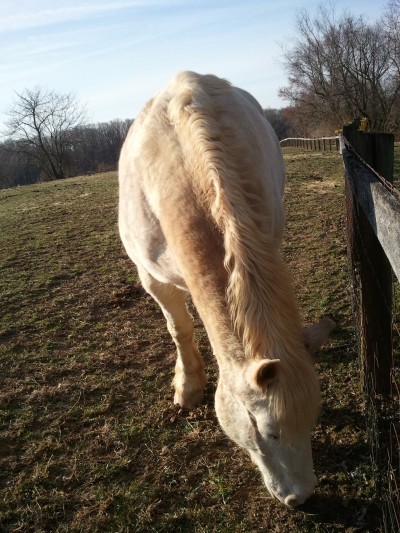Every early Thursday morning I’m on the road heading southwest. The light is a pleasure. Being up this early is another — I always feel as if I’ve stolen extra time for my life from a secret locked room. Since I’m driving country roads, I’m often the only car so I drive a little slower and look around. The crows are always out; the first birds to rise, and last Thursday I saw two carrying twigs toward a heavier copse of trees. They build their nests secretively and will remain silent around them.
Music accompanies me. One Philadelphia station that programs classical music# has a morning announcer who can pronounce any foreign name or selection title with unfailing accuracy and panache. I’ll sometimes mimic him in his pronunciation of obscure Russian composers or in the heavy German consonants of a fugue’s title. Then comes the music — nothing lugubrious in the morning; these are light, airy, bouncy melodies, nocturnes and suites and film scores. Lots of trumpets. They have dash.
 At a set time the station features a podcast from an observatory that draws attention to events in the night skies. For example, in Vela, a constellation 1000 light years distant from us, a super-nova exploded 12,000 years ago (the speaker who tells us this is a woman who has a superb teacher’s voice — nuanced, exciting, melodious). At the core of the nebula formed by the explosion sits a neutron star, only as wide as a small city but heavier than the Sun, and it spins 11 times a second and sends pulses out that our radio telescopes have picked up. And driving, my mind trying to make sense of such a thing, I thought of a motorcycle stunt rider in a body suit studded with lights who I had once seen circle the inside of a tiny cage at great speed, metal slips clipped to his struts. The lights and the clicking and the roar of his engine merged and left me grinning in happiness at his audacity and showmanship and at this great cry of energy and motion. Then the station played In the Steppes of Central Asia by Borodin, an acoustic display of another kind of vast space. In just a few minutes two impressions and landscapes of infinity fell together, and then, at that moment, I had a sense of what the eternal actually looked like.
At a set time the station features a podcast from an observatory that draws attention to events in the night skies. For example, in Vela, a constellation 1000 light years distant from us, a super-nova exploded 12,000 years ago (the speaker who tells us this is a woman who has a superb teacher’s voice — nuanced, exciting, melodious). At the core of the nebula formed by the explosion sits a neutron star, only as wide as a small city but heavier than the Sun, and it spins 11 times a second and sends pulses out that our radio telescopes have picked up. And driving, my mind trying to make sense of such a thing, I thought of a motorcycle stunt rider in a body suit studded with lights who I had once seen circle the inside of a tiny cage at great speed, metal slips clipped to his struts. The lights and the clicking and the roar of his engine merged and left me grinning in happiness at his audacity and showmanship and at this great cry of energy and motion. Then the station played In the Steppes of Central Asia by Borodin, an acoustic display of another kind of vast space. In just a few minutes two impressions and landscapes of infinity fell together, and then, at that moment, I had a sense of what the eternal actually looked like.
I’ve never understood the word viscerally as applied to the Christian belief in an eternal life, the deep time of geology, or the  deeper time of cosmology. The word remained stubbornly enigmatic, like a monumental statue of a terrible figure finally uncovered in some impenetrable jungle. I could not place the word in a context that made sense. But suddenly, driving through southern Chester County on an ordinary morning, in one moment, what Wordsworth called “spots of time”, the word crystalized into meaning. The eternal is inescapable in the physical structure of matter, of things themselves – neutron stars like the Vela Pulsar are the inescapable consequences of natural forces that are in play every second. We can listen to that play, literally listen to it, in the staccato ticking of a star 5,900 trillion miles away from us (1000 light years), and we hear it as it snapped forth 1000 years ago. It all exists. The photograph of the star itself appears on this page. We will never see visit it, but we might visit the steppes of Mongolia someday or even more likely, gain a kinetic feel for the stretched-out spaces of the planet under North Dakota skies.
deeper time of cosmology. The word remained stubbornly enigmatic, like a monumental statue of a terrible figure finally uncovered in some impenetrable jungle. I could not place the word in a context that made sense. But suddenly, driving through southern Chester County on an ordinary morning, in one moment, what Wordsworth called “spots of time”, the word crystalized into meaning. The eternal is inescapable in the physical structure of matter, of things themselves – neutron stars like the Vela Pulsar are the inescapable consequences of natural forces that are in play every second. We can listen to that play, literally listen to it, in the staccato ticking of a star 5,900 trillion miles away from us (1000 light years), and we hear it as it snapped forth 1000 years ago. It all exists. The photograph of the star itself appears on this page. We will never see visit it, but we might visit the steppes of Mongolia someday or even more likely, gain a kinetic feel for the stretched-out spaces of the planet under North Dakota skies.
These plains can tell us about Vela, about its endlessness, about an endurance in time that has no limits as we construct them in human terms. Together they give us the ability to imagine them as the comparative parts of a metaphor — Vela is like the steppes in that …. A metaphor by its nature stretches our understanding. It gives us images and images contain ideas. I think if we stood on a dark, empty plain on a moonless night and looked at the Vela Nebulae low on the southern sky that the eternal would become “the thing itself,”*a rooted sense in the body that we too are a part of that endlessness, a repository of molecular creation: “The atoms of our bodies are traceable to stars that manufactured them in their cores and exploded these enriched ingredients across our galaxy, billions of years ago. For this reason, we are biologically connected to every other living thing in the world. We are chemically connected to all molecules on Earth. And we are atomically connected to all atoms in the universe. We are not figuratively, but literally stardust.” **
At the Refuge, my destination this morning, walking with my first dog of the day, I stop next to a massive white horse, a Percheron  I think. He is very friendly. I stop to stroke under his jaw and breathe into his nostrils. This shifting-mane-snorting-head-tossing creature too has the atoms of stars in its body, as does Lena, waiting patiently by my side, as do you and I and all the rest of us, villains and comedians, mensch’s and fools.
I think. He is very friendly. I stop to stroke under his jaw and breathe into his nostrils. This shifting-mane-snorting-head-tossing creature too has the atoms of stars in its body, as does Lena, waiting patiently by my side, as do you and I and all the rest of us, villains and comedians, mensch’s and fools.
*From “Not Ideas About the Thing But the Thing Itself” by Wallace Stevens
Brings to mind Neil deGrasse Tyson’s response in “The Most Astounding Fact”.
Nice post.